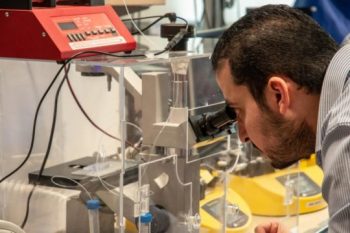A simple injection that can help regrow damaged tissue has long been the dream of physicians and patients alike. A new study by researchers at UBC Okanagan in Canada moves that dream closer to reality with a device that makes encapsulating cells much faster, cheaper and more effective.
The idea of injecting different kinds of tissue cells is an enticing concept because by introducing cells into damaged tissue, we can supercharge the body’s own processes to regrow and repair an injury. Everything from broken bones to torn ligaments could benefit from this kind of approach and suggests even whole organs could be repaired as the technology improves.
The problem is that cells on their own are delicate and tend not to survive when injected directly into the body. To ensure survival, they need to be encased in a coating that protects them from physical damage and from the body’s own immune system. But designing this level of protection is extremely expensive and time-consuming.
The research team has now developed an automated encapsulation device that encases many cells in a microgel using a specialized blue laser and purifies them to produce a clean useable sample in just a few minutes. The advantage of their system is that over 85 percent of the cells survive and the process can be easily scaled up. The team is already looking at the next step, which will be to embed different kinds of stem cells — cells that have not yet differentiated into specific tissue types — into the microgels alongside specialized proteins or hormones called growth factors. The idea is to help the stem cells transform into the appropriate tissue type once they are injected.

